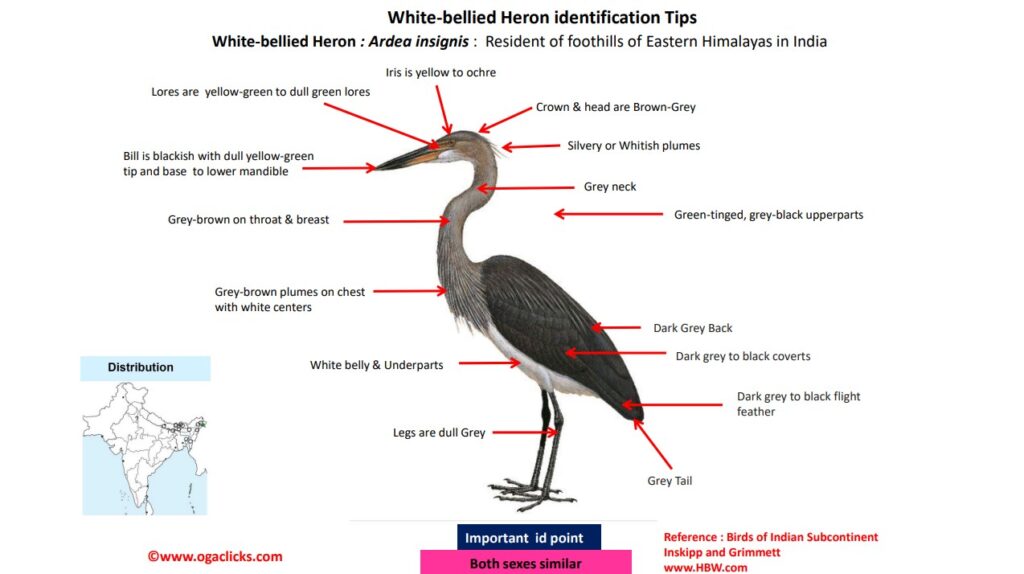
White-bellied Heron Adrea insignis
Etymology:
- Ardea : Latin word ardea- In Roman mythology the town of Ardea, capital of the Rutuli, was razed to theground, and from the ashes rose a lean, pale bird,shaking the cinders from its wings and utteringmournful cries.
- Insignis: Latin word for Large ,extraordinary, remarkable
Vernacular Name : Hindi: Safed Pet Anjan
Distribution in India: Resident of Eastern Himalayan Foothills ( Walong in East Arunachal Pradesh, India is one of the best places to see this bird) .
Description: Size of 127 cm; bill size 152–176 mm. It is a robust bird with fairly uniform plumage contrasting with white belly. It has in breeding plumage a long silvery or whitish plume on rear crown and lower foreneck. It has a grey neck and brownish back; It has a strong contrast between white coverts and dark flight feathers. The bill appears blackish with dull yellow-green tip and base to lower mandible. The iris is yellow to ochre; facial skin is green-yellow. The legs and feet dull grey. Both the sexes are similar. The juvenile is like the adult, but browner above, with paler bill, whiter on foreneck, lacks streaks on underparts, pale-fringed and -streaked upperparts, and has paler legs.
Habitat: It is found in Inland swamps, marshes, terai and stretches of rivers and streams in subtropical broadleaf forest. It is recorded up to 1500 m in India. It is dependent on areas with mature forest during breeding season. In non-breeding season it seems more content to use slower-flowing rivers and even grassy marshes but is everywhere intolerant of disturbed or degraded habitats.
Food habits: It eats large fish, large crayfish and insects, amphibians, reptiles and small mammals. The prey is mainly taken by waiting patiently knee-deep in fast-flowing water or by walking slowly along shore. It principally feeds in daylight. It is territorial, normally feeding alone.
Breeding habits: They breed in June–Aug in Indian . The nest is a large stick platform placed high up tall tree and well camouflaged by surrounding vegetation. The male brings material, which is then arranged by female. They lay a clutch of 2–4 greenish-blue eggs, The eggs are incubated by both sexes. The chick has white head and body, with black and pink bill, while wings and back become darkish grey and legs whitish. The young are fed exclusively on fish.